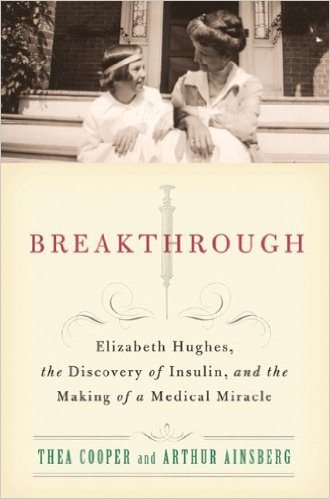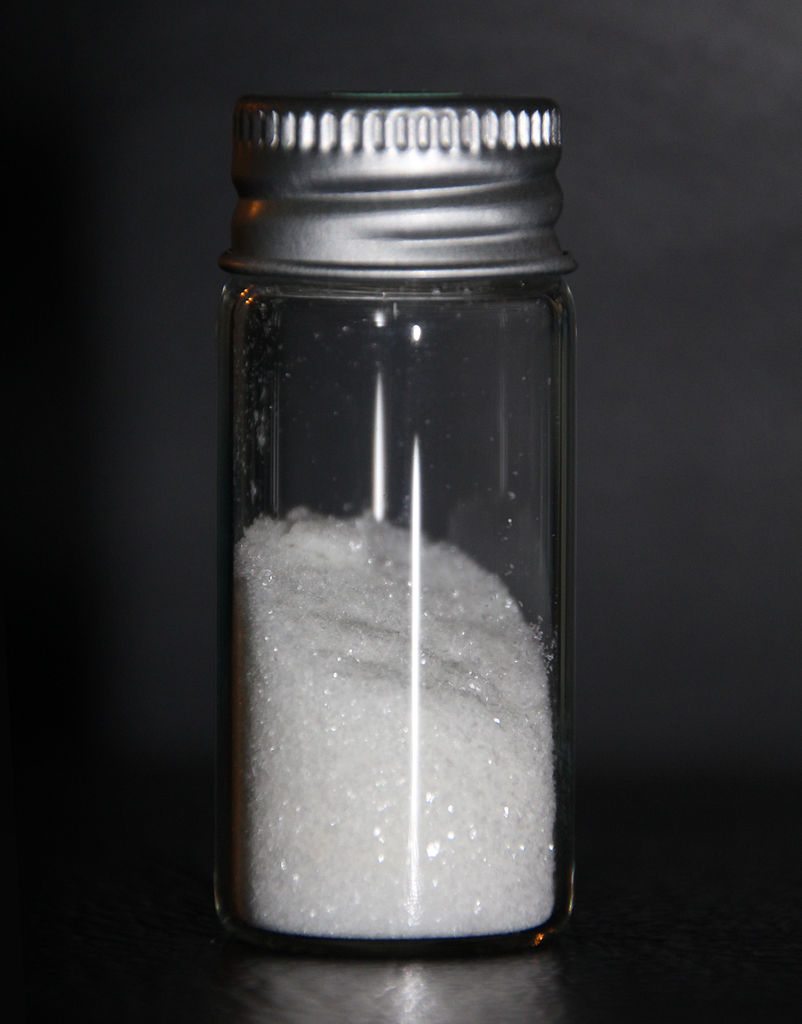
On my recent trip to Nashville for CSICon, I took advantage of the long hours on the plane to read Breakthrough: Elizabeth Hughes, the Discovery of Insulin, and the Making of a Medical Miracle, by Thea Cooper and Arthur Ainsberg. One of our commenters recommended it. I’m not sure who (was it Chris?), but I want to thank you.
It’s the history of insulin told from the perspective of the scientists and of a typical patient, and it touches on a number of issues that we have addressed on SBM. It shows how science works to save lives, in stark contrast to the empty promises of CAM.
The history
You would have to be a centenarian to remember what diabetes was like before the discovery of insulin in 1922. Type I diabetes in children was a death sentence. They wasted away, grew weak, and suffered indescribably before their inevitable death. They had insatiable thirst and hunger, but trying to satisfy their hunger only made things worse, and they continued to lose weight. The only treatment available was a rigorous diet (on the order of 400 calories a day with minimal carbohydrates), and all that did was prolong life by a few months. Patients usually had to be hospitalized to control their intake with carefully measured quantities of unpalatable food. Intake was adjusted by testing the urine, which was a complicated procedure at the time. Instead of a convenient dipstick, testing involved Benedict’s solution, test tubes, eyedroppers, teaspoons, a bottle for urine, and an aluminum cup. (Much later, urine testing was discarded in favor of the much more accurate blood testing.)
Earlier animal research had provided clues about the etiology of diabetes. They knew the pancreas was not producing adequate amounts of some unknown substance, and when aqueous extracts of pancreas were injected into diabetic dogs they appeared to have lower blood sugar levels; but research was interrupted by World War I. A Canadian doctor named Frederick Banting realized that the elusive substance was produced in the islets of Langerhans and that digestive secretions from the rest of the pancreas were destroying it during the extraction process. He devised elegant experiments in dogs, causing the pancreas to atrophy but leaving the islets intact. He succeeded in isolating the substance we now call insulin, and when he injected it into a pancreatectomized dog, all signs of diabetes disappeared.
The drug approval process
In today’s research environment, he could not have progressed to human experimentation as rapidly as he did. There was no time to lose: children were dying daily. They understood the mechanism and there was strong prior probability that insulin would save those children. There was little to lose, because without treatment those suffering children were as good as dead. So they rushed into treatment with small quantities of a poorly purified product that sometimes caused abscesses and reactions. Dosage was difficult to control, and patients sometimes went into hypoglycemic comas.
If the research were done today, it would qualify for the FDA Fast Track Development Program that accelerates approval of drugs that show promise for treating life-threatening diseases where there is no other good option.
The initial development of insulin took just under two years from the first dog experiments to large-scale production. The cost to the University of Toronto was $1,400, and Eli Lilly’s initial investment was $250,000. Today it typically takes 10-15 years to develop a new drug, and the cost often exceeds $1 billion.
Animal research is essential
It’s hard to imagine what would have happened if research on dogs had been prohibited. Insulin might not have been developed at all, or at least it would have taken decades longer. I think we can safely say that animal research saved many lives.
Big Pharma is not all bad
Insulin was in short supply until the Eli Lilly company got involved; they purchased truckloads of animal pancreases and developed a pure, standardized product. An anecdote in the book describes early problems with potency. The featured patient, Elizabeth Hughes, had to take 5cc at a time. Her syringe only held 2cc, so the needle had to be left in place while the glass syringe was unscrewed and refilled twice. The procedure took 20 minutes, and her hip swelled and her whole leg went numb. These symptoms resolved only after an hour of careful walking, but she was happy to accept all this in order to be able to eat real food again.
Eli Lilly was Big Pharma and of course they had a profit motive, but they were generous to those who couldn’t pay, and without their involvement the development process would have been vastly delayed and uncounted lives would have been lost. Lesson: Big Pharma is not the enemy: despite its drawbacks, it does a lot of good.
Genetic engineering is not all bad
Animal insulin caused reactions in some patients, so in 1982 Genentech marketed genetically engineered human insulin under the name Humulin. Almost all insulin used today is biosynthetic recombinant human insulin. How many of those people who are speaking out against the very idea of GMOs are diabetic, or have relatives who are diabetic?
The Nobel Prize and financial motivations
Banting and Macleod were awarded the Nobel Prize in 1923 for the practical extraction of insulin. They were incensed that the other members of their team were not included, and they immediately shared their prize money with Best and Collip. They sold the original patent to the University of Toronto for one half-dollar. They were not looking for fame or fortune; they wanted to keep sick children from dying. They did eventually benefit financially, but that was the last thing on their minds. The anti-vaccine folks have attacked Paul Offit for his role in developing the rotavirus vaccine; but I am convinced that he, too, acted out of concern for patients rather than from any desire to get rich. I am also convinced that many promoters of CAM care more about their wallets than their patients’ welfare.
Contrast insulin with CAM
Various natural treatments for diabetes are advocated by CAM enthusiasts:
- Herbal products including bitter melon, cinnamon, fenugreek, ginseng, aloe vera, agaric mushroom, chromium, magnesium, prickly pear, soy, vanadium, oat bran, guar gum, glucomannan, bean pod, psyllium, white mulberry, alpha-lipoic acid, chia, coenzyme Q10, selenium, stevia, and others.
- Homeopathy
- Yoga
- Acupressure
- Reflexology
These are recommended mainly for type 2 diabetes, but also as adjuncts to insulin treatment in type 1 diabetes. In addition, many websites claim to cure type 2 diabetes. Diabetes can’t be cured, and evidence for clinical benefit from any of these natural remedies is weak or nonexistent. Even the usually credulous NCCAM warns:
In general, there is not enough scientific evidence to prove that dietary supplements have substantial benefits for type 2 diabetes or its complications… Do not replace scientifically proven treatments for diabetes with CAM treatments that are unproven.
Nevertheless, the NCCAM is funding studies of chromium, yoga, gingko, EGCG, Reiki, vitamin C, glucosamine, and dark chocolate for the treatment of diabetes.
Compare the contributions of CAM during the course of the 20th century with the accomplishments of scientific medicine. Science has conquered a disease that used to be uniformly fatal. It has given us disposable syringes, insulin pens, insulin pumps, pure insulin with measured potency, protamine zinc to slow the action, various long-lasting insulins, sulfated insulin to avoid insulin resistance, human insulin to avoid reactions, several effective oral medications for type 2 diabetes, convenient home blood testing gadgets, etc. And there have been innumerable studies to determine the best management of diabetic patients. CAM looks pretty puny in comparison.
We still don’t know what causes type 1 diabetes and we can’t prevent it; but we know what it is, and we can keep the disease under control with insulin, and we can keep patients alive and feeling well. This is not just “treating the symptoms” as our critics claim; and of course CAM does nothing to “treat the cause.”
The story of insulin is well worth reading. It’s a paean to science. It’s history with lessons for today.

